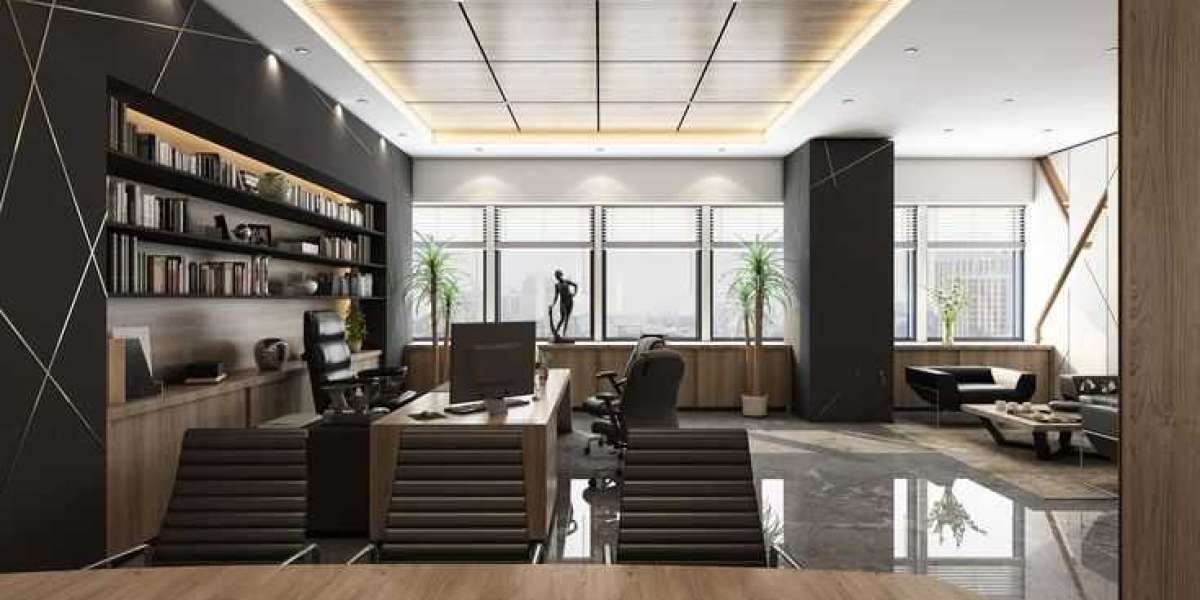Introduction
Creating the Best Working Space: Insights for designing the perfect Office Office has been something more than a room where people come just to work. It is that place that reflects the company's culture, pushes the productivity ratio, and helps innovate. In cities like Bangalore, one needs an office that looks good as much as it works because of frequent businesses in that area. It is here that the office interior designer Bangalore will come into play. An office is not merely a piling of furniture or a choice of colors. Still, it is a place that wakes up the spirit within the employees and which serves the purpose of the organization. The following factors contribute to the proper design of the office space.
- Client's Requirements
This is part of the process of creating an effective office design and understanding what would best work for the business, as a company is quite distinctive. The interior designer has to be very close to the client to identify all the key elements of the company's mission values and operational requirements. Whether a creative industry such as the media or design or a corporate business such as finance or IT, it needs to depict the nature of business it represents.
A good interior designer ought to understand the heart of a business and then put it across in a workable and pleasing aesthetic sense. For example, to foster innovation, tech-based start-ups would need an open office space where ideas float and are crunched; attorneys would require a private office where secret meetings can be held, and this type of demand requires a more flexible thought process and understanding of how a company would need to work to offer a workable design.
- Space Planning and Functionality
Office designing must ensure proper space planning for the available space. An overcrowded or nonsensical space in terms of flow can be painful or frustrating for the people who occupy it. Of course, designers have to decide what spaces should be distributed, but each of them will be used for a mix of private offices, collaboration spaces, and meeting rooms, allowing for meeting the various needs of all employees while doing different tasks.
Proper space planning also boosts productivity. For instance, if the stations have an environment that is luminous and resources are accessible, then chances are pretty high for staff to get what they need to get the job done. As such, the office environment must be open and inviting but, at the same time, it must provide necessary spaces for focus work and collaboration.
A third major component in space planning is growth. It should be easy to grow into this space without having to renovate the office. Modular designs for furniture, flexible workspaces, and multipurpose rooms will ensure the office will be workable if the company keeps growing.
- Lighting and Ambiance
Illumination is one of the office design aspects. It must play the role of impacting the well-being and production of workers in helping them set up an excellent perception of their surroundings. Thus, natural light is always preferred as it reduces eye strain, creates a better mood, and generally enhances health. Strategic placement of glass partitions and windows will help in achieving the effect of daylight maximization.
However, artificial lighting also deserves equal importance. Task lighting, such as desk lamps or under-cabinet lights, ensures easy completion of specific tasks for employees. Ambient lighting should provide comfort and brightness that neither strains the eyes nor creates a dull environment.
The lighting can also be responsible for developing ambiance in an office that is likely to influence the atmosphere of space. Warm lighting creates a relaxed ambiance, hence perfect for use in lounge areas or break rooms. Cooler lighting is good for use in areas where work is going to be concentrated. It assists in achieving alertness and concentration.
- Color and Material Choices
An office color scheme psychologically impacts employees as well as clients. Colors do indeed provoke feelings; they can affect moods and even productivity levels. For example, blue stimulates the mind and may prove pretty useful in case you have to focus on your job while using the color for focused work. Green promotes balance and harmony, and you'll need that in a conference room.
This is where sustainability becomes the real deal in the choice of materials when designing an office. Organizations are presently engaging with post-consumer recycled materials, paints friendly to the environment, and energy-efficient solutions. In this regard, designers choose materials that will last but be environmentally friendly, hence the sustainability of the office over time.
Textures also tally up in the pursuit of making a balanced design for an office. Comfort is easily given by carpets and upholstered furniture, while smooth glass and metals give a modern, professional look. Mixing these various textures gives the design more depth and interest, hence creating a more engaging workspace.
- Branding and Personalization
The office should look like a replica of the company's brand. Therefore, everything from the furniture, and colors, to the artwork should resonate well with the brand identity. For example, a high-tech company probably will demand something that will have a futuristic design and sleek, and minimalist furniture. A creative agency might enjoy bold colors and artistic elements that strike innovation.
The company's branding elements, which may consist of logos and colors along with other pertinent information, are usually incorporated into the design to bring cohesion within the place. That is well-embraced by the employees and the visitors. Personalization is one very important feature because it allows an employee to feel at home in that place. This can be achieved through custom artwork, branded furniture, or even such subtle details as putting the company motto on the walls.
Branding is beautiful and part of the way that people experience the office. Therefore, a good-branded office is considered a status symbol to your clients and builds pride for your employees at work, eventually raising the general overall satisfaction and loyalty for the company.
- Ergonomics and Employee Comfort
Currently, offices have a very important focus on employees' well-being. Cozy furniture, including an adjustable chair or sit-stand desk, will provide comfort and even serve as a bonus against health risks-including possible back pain or even repetitive strain injuries. It is common knowledge that comfortable employees always work effectively and, additionally, are unlikely to feel fatigue or discomfort within one working day.
Break areas and rest places are on par with demand to keep the morale of an employee intact. They allow the employees to take some small breaks, recharge themselves, and then come back to work with renewed focus. It presents that an office respects the comfort and well-being of employees and therefore might be converted to high retention rates and great work culture.
- Technology Integration
These new office designs cannot subsist without technology, and for such an office in the computer age to be well-designed, it should integrate this technology to enhance video conferencing, presentations, as well as collaborative work across different functions. This would include an aspect that may sometimes necessitate designers to expose the technology to people in built-in charging stations, smart lighting systems, and even interactive displays in meeting rooms among other new features.
Similarly, the design should reflect cable management so that office settings do not look cluttered but clean and professional. Wireless solutions, such as Wi-Fi-enabled printers and Bluetooth speakers give a more streamlined and efficient workspace.
Conclusion
A well-designed office is an important resource that every business company needs to influence productivity, employee satisfaction, and brand identity. The interior designers in an office located in Bangalore should have knowledge that enables them to create an interior that fosters culture, values, and actions related to the functioning of the corporation. This includes planning, lighting, color, branding, and technology integration into the design, which would make offices look great, but more important considerations enhance performance and facilitate creativity. Depending on the purpose of the office design to inspire creativity, promote teamwork, or guarantee a professional calm working space-the proper design of an office goes a long way in supporting such efforts.













